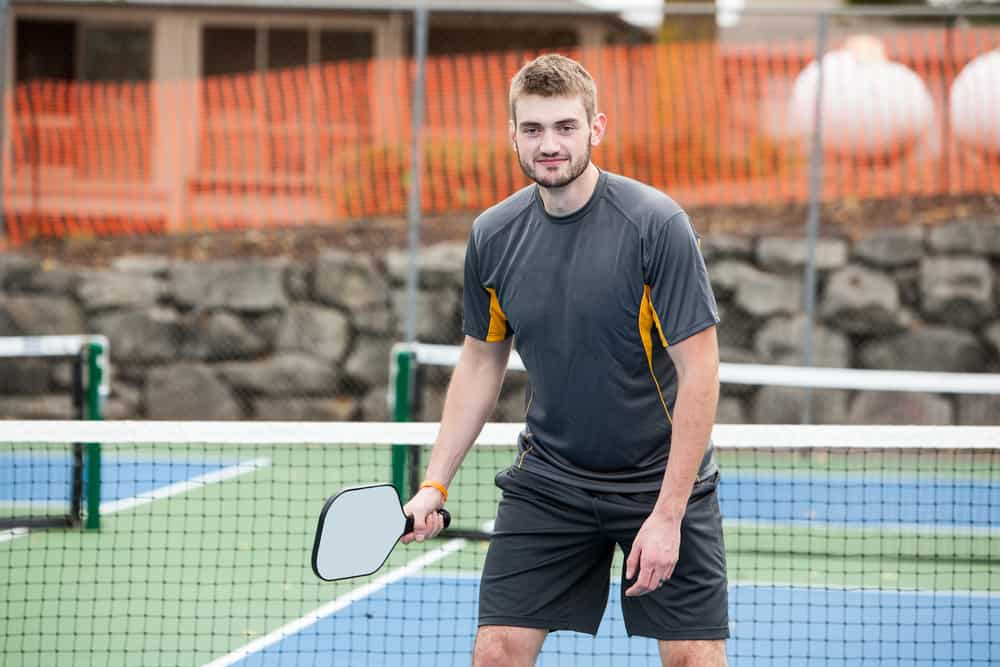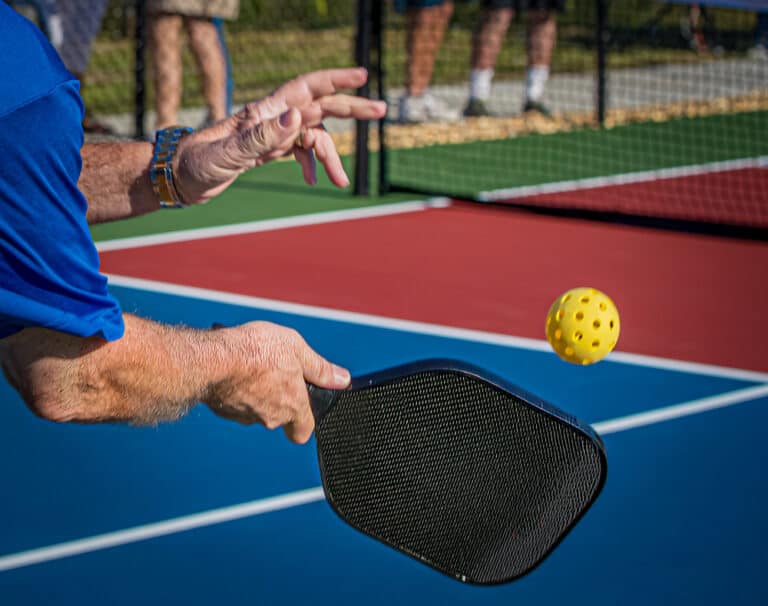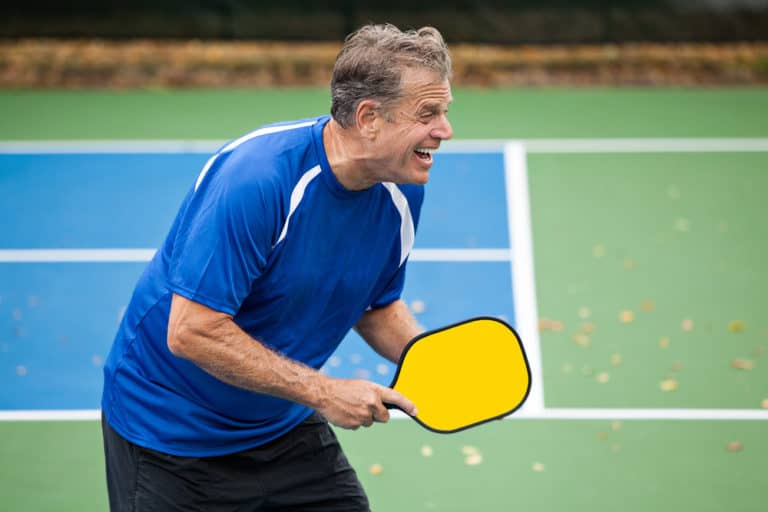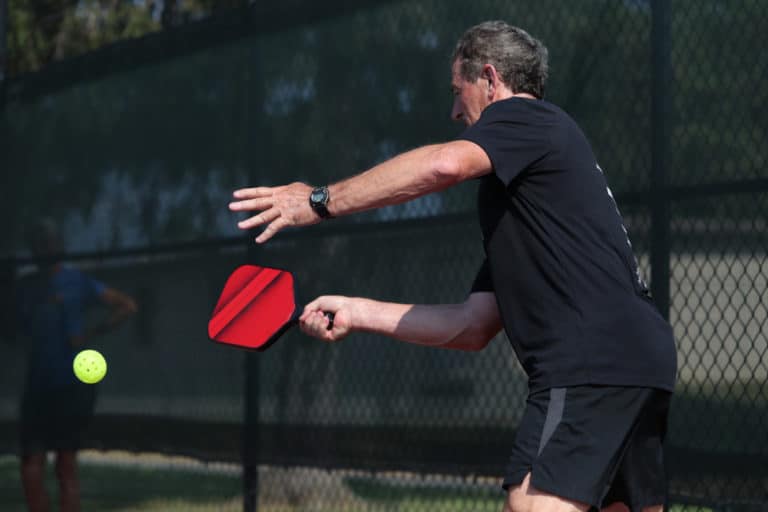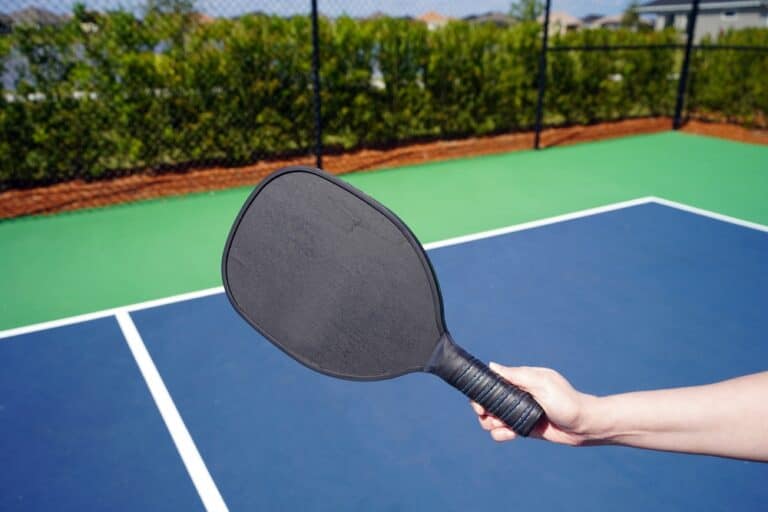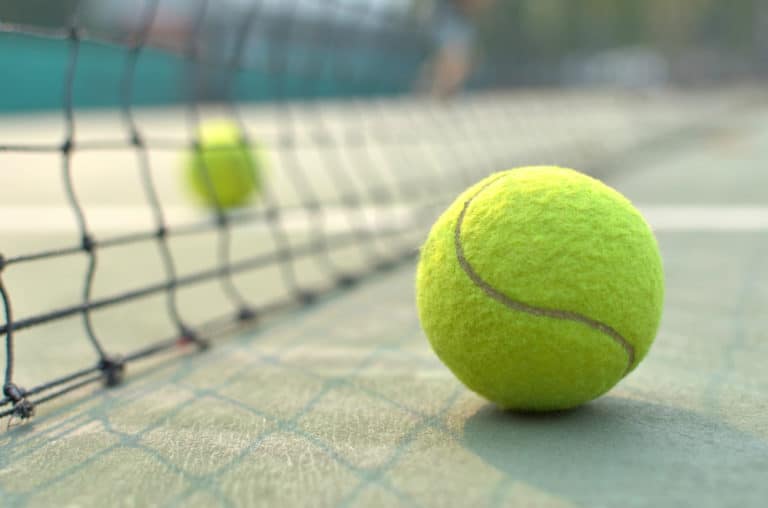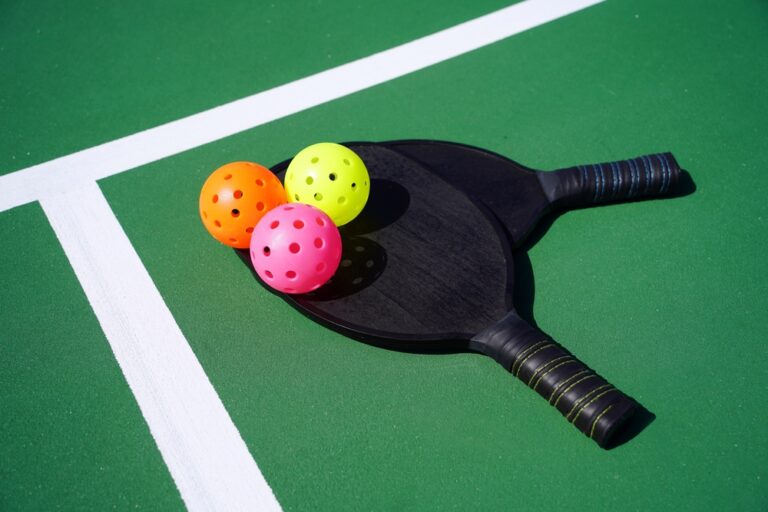What Grip Size Is Best For Pickleball?
Have you started playing pickleball, but the paddle you’re using feels uncomfortable in your hand? You may be using a grip size that is either too small or too big. Choosing the correct grip size can significantly impact how well you play the game.
The best way to measure your perfect pickleball paddle grip size is to use a ruler to measure from your palm’s middle crease to the tip of your ring finger. It’s better to increase your paddle’s grip size if it’s too small, as playing with the wrong grip size can also affect your playing ability.
If you’re thinking about getting a new paddle but aren’t sure which grip size to get, you’re in luck. This article explains what grip sizes there are, why it’s essential to use the correct grip size, and how to adjust your grip size to fit you best.
What Is Grip Size In Pickleball?
Choosing the perfect pickleball paddle grip size for your hand is essential. Playing with the perfect grip size makes it easier to hold and swing. A paddle that is too small or too large will be uncomfortable to use or become uncomfortable over time. A player using the wrong grip size will be overcompensating while playing, further decreasing their comfort and playing ability.
On the other hand, some players prefer using grips that are either too small or too big to complement their play style. While using the incorrect grip is uncomfortable, it also gives certain players advantages depending on their play style and strength.
Oversized grips give players more stability when using their paddle. This can help defensive player block balls more smoothly without much pushback from the paddle. It can stop the paddle from wobbling or turning, making the ball more likely to go where the player intended. Attacking players may use more oversized grips to provide more stability on harder shots.
Undersized grips give players less stability but increase their wrist mobility. Wrist mobility is essential for players who have a control-centered play style. The improved mobility makes it easier to hit shots at unique angles without the player having to get their entire body behind the shot. Wrist mobility is also good for generating more spin on shots.
These tactics are for high-level players with experience and who know how to use the side effects of bigger or smaller grips and who play in a way that reduces the stress placed on their hands, wrists, and shoulders.
When paddles increase in price from entry-level models, ergonomic and premium grips become more prevalent. Ergonomic grips have a shape that fits more comfortably in a player’s hand, and some allow for better wrist mobility, giving players better control. It’s possible to wrap a standard grip yourself with an overgrip to give it an ergonomic shape, but it can be pretty tricky.
Choosing The Best Grip Size For Your Hand
When you’re a beginner, finding the correct grip size for your hand significantly affects how the paddle feels. This directly affects how well you learn to hit the ball and how quickly you pick it up. The wrong grip size can make it difficult to control the paddle and ruin your form when hitting the ball.
Because choosing the correct grip size is so important, it’s also essential to know how to choose the correct size and why it matters so much. The typical grip size is between four and five inches, but there are exceptions where players have larger hands or very small hands.
Unfortunately, there isn’t much that players can do if their hands are too small for the four-inch grip size, as that is the smallest they are made. Luckily, this is typically only the case for small children. Older children and adults will usually have at least a four-inch grip size. If a player’s hand is too big, they can always wrap the handle in an overgrip to give it more bulk.
Players can perform a few tests to find the ideal grip size for their hands. Some of the tests are accurate and exact, while others are more in line with estimations. It’s important to note that when performing these tests, they should always be done on the dominant or playing hand.
The Ruler Test
The ruler test is probably the most exact of all the tests to find the correct grip size. As the name suggests, you’ll need a ruler to perform this test.
First, open your hand with your fingers together so that your palm and fingers are straight in line. Next, place the tip of the ruler on the second crease in your palm. It’ll be the central horizontal crease as there are three.
Make sure the ruler is in line or parallel with your ring finger and measure from the crease to the tip of the finger. That measurement will tell you your exact perfect grip size.
The Index Finger Test
The second testing method you can use if there’s a paddle available is to grip a paddle’s handle using the Continental grip style. For players that don’t know what that looks like, it’s when you grip the paddle so that when you look down at it, you’ll see the side of it instead of the paddle face.
If you’re right-handed, once you’ve gripped it properly, turn your wrist a small amount counterclockwise around the handle. If you are left-handed, turn your wrist a small amount clockwise.
When you’ve gripped it correctly, slide the index finger of your other hand along the handle between your fingertips and your palm. It is the correct size if it fits snugly between your ring finger and your palm. If your finger can slide passed your ring finger, the grip is too big, and if it feels too tight at your ring finger, the grip is too small.
The Natural Grip Test
This test is similar to the index finger test but slightly less accurate than the other two tests, but it can still give you a good idea of your ideal grip size. Grip a paddle’s handle in a way that feels natural. Grip it snugly to get a more accurate result, but not too tight.
If your fingers are touching your palm, the handle is too small for you. Alternatively, the grip is too big for you if your fingertips are more than an inch away from your palm when holding the paddle. The ideal grip size will leave a gap of less than one inch between your fingertips and your palms.
The Height Test
This method of ascertaining the best grip size for you is the least accurate of the four methods, but it does give a good estimation with which to work.
If you are shorter than 5’2”, your grip size will probably be around 4 inches. If you are between 5’3” and 5’8”, your grip size will range from 4 ⅛ inches to 4 ¼ inches. Finally, if you are taller than 5’8”, your grip size will be around 4 ½ inches.
This test can be very wrong, as a tall person could have smaller hands, or a short person could have much larger hands. It doesn’t use a relative measurement of any kind, like a ruler or a paddle. It simply generalizes based on the average hand sizes of people at different heights.

How Grip Sizes Are Measured
In the same way that a player measures their grip size by wrapping their hands around a pickleball paddle’s handle, handle sizes are measured by their circumference. To maintain standard measurements, all handles are measured around their middles instead of at the base or neck.
When a paddle’s grip size is measured, the measurement doesn’t only take the handle’s circumference into account. It also any grip tape or overgrip that the manufacturer has applied to the handle. This measurement, or the complete measurement, is the final grip size of a paddle before a player purchases it.
The grip size changes if a player adds more tape to the handle to make it bigger or removes some tape to decrease the size slightly. If a player’s perfect grip size is between two standard sizes, the smaller grip is the better choice as the handle can be wrapped in an overgrip to bulk it up.
It’s typically easier to increase the grip size of a standard paddle, so choosing a bigger grip size wouldn’t be as good because the player will have trouble changing it.
Most paddle models come in one or two options for grip sizes, so if your hand is too small or far too big, it will be difficult to use those paddles. However, some companies make the same paddle with different options for the entire grip size range.
The smallest size a pickleball paddle’s grip can be is 4 inches. The sizes increase ⅛ at a time, so after 4 inches, it would be 4 ⅛ inches, 4 ¼ inches, and so on until the maximum size of 4 ¾ inches.
The sizes are given in inches to make it easier for players to know which size they need. Players with large hands have a wide selection to choose from, as they can choose a paddle that matches their play style and simply tape the handle to make it bigger to fit their hands.
There are different ways of wrapping a pickleball paddle’s handle, and each has a different effect on the grip size. A tighter wrap means the tape is wrapped around the handle at a shallow angle to ensure that layers overlap. The purpose of wrapping the handle more tightly is to increase the grip size significantly.
A looser wrap means the tape is wrapped at a steeper angle so that layers don’t overlap too much. Players would use a looser wrap if the grip is slightly too small for them and they want to increase the grip size to fit their hands better. Players could use this type of wrap if their ideal grip measurement is between two standard sizes or if they want a different tape with not much added size.
What Happens If Pickleball Players Use The Wrong Grip Size?
Choosing the correct pickleball paddle grip size isn’t only about comfort and usability. The correct grip size gives players a good balance between wrist mobility and paddle stability. Players don’t need to strain their hands and arms as much to keep the paddle in the correct position. Playing with the incorrect grip size can cause injury over time, like tennis elbow, or in this case, pickleball elbow.
Playing with a paddle with a grip that is too small causes players to strain their wrists, elbows, and shoulders. Smaller grips force them to grip the handle more tightly. This causes pain and muscle fatigue over time, and players must use more energy and strength to keep the paddle in the correct position. If they are playing a match, they may begin to struggle as the game carries on.
Grip sizes that are too big are tricky to keep a firm grip on and cause strain to players’ hands and wrists. Larger grips also reduce the amount of wrist mobility players have, which limits the plays and shots a player can make.
Conclusion
Pickleball paddles come in a range of grip sizes from 4 inches to 4 ¾ inches. The size of a grip is its circumference and using the grip size that is best for you can make a big difference in your ability to play. Using grips that are too small or too big can result in injuries over the long term and make it challenging to play effectively.
It’s possible to increase a paddle’s grip size to fit larger hands by wrapping the grip with another layer of grip tape or overgrip. There are also different methods of wrapping the handle to give it different degrees of thickness. If your ideal grip size is between two sizes, it’s best to choose the smaller one and wrap it because it can be challenging to make the grip smaller.

